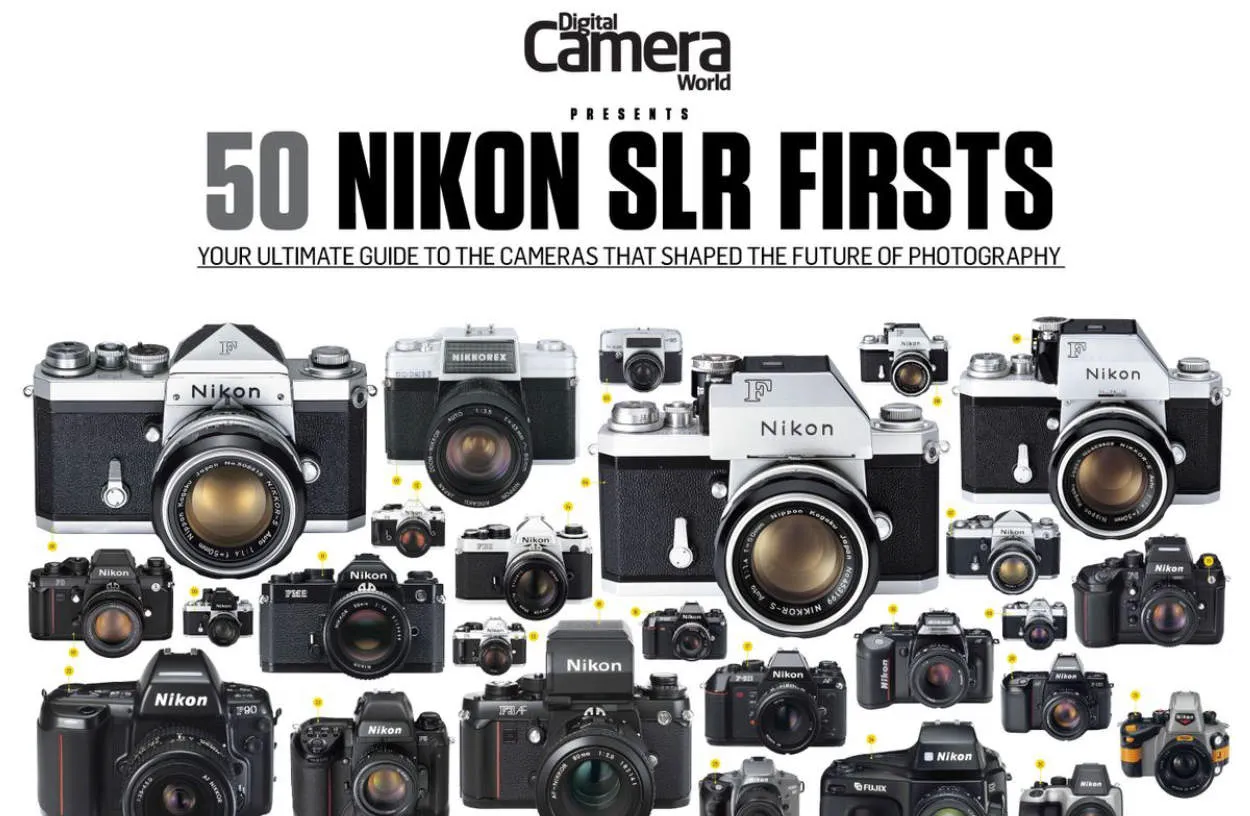The Evolution of DSLR Cameras in Japan has been a remarkable journey, with technological advancements shaping the industry. From the early days of film cameras to the rise of digital photography, Japan has been at the forefront of innovation, constantly pushing the boundaries and revolutionizing the way we capture moments.
The Beginnings of DSLR Technology in Japan
DSL (Digital Single-Lens Reflex) cameras have revolutionized the world of photography, providing photographers with superior image quality and control. The history of DSLR cameras can be traced back to Japan, where technological advancements and innovations laid the foundation for this groundbreaking technology.
In the mid-1980s, Japanese camera manufacturers began experimenting with digital imaging technology. This led to the development of the first-ever DSLR prototype, which combined the optical viewfinder system of traditional SLR cameras with a digital image sensor. This breakthrough paved the way for the birth of DSLR cameras as we know them today.
One of the pioneering Japanese companies in DSLR technology was Canon. In 1987, Canon launched the EOS series, introducing the world’s first fully-electronic mount system for SLR cameras. This system allowed for seamless communication between the camera body and lens, enabling advanced autofocus and exposure control.
Another influential player in the evolution of DSLR cameras was Nikon. In 1999, Nikon released the Nikon D1, the world’s first professional digital SLR camera. The D1 featured a 2.7-megapixel sensor and offered photographers unprecedented image quality and versatility. This marked a significant milestone in the advancement of DSLR technology.
As technology continued to improve, DSLR cameras became more accessible to amateur photographers. Manufacturers like Sony, Panasonic, and Olympus entered the market, introducing innovative features and compact designs. These advancements, coupled with the growing demand for high-quality digital imagery, fueled the rapid expansion of DSLR technology in Japan and worldwide.
Today, DSLR cameras continue to evolve, with higher resolutions, enhanced autofocus systems, and improved video capabilities. Japanese camera manufacturers remain at the forefront of this ongoing innovation, continuously pushing the boundaries of what DSLR technology can achieve.
Major Technological Advancements in DSLR Cameras
In the world of photography, DSLR (Digital Single Lens Reflex) cameras have significantly evolved over the years, particularly in Japan where some of the biggest camera manufacturers are based. These advancements have revolutionized the way we capture images, offering photographers more control, versatility, and superior image quality.
1. Image Sensor Technology
One of the key advancements in DSLR cameras is the development of image sensor technology. Initially, CCD (Charge-Coupled Device) sensors were commonly used, but they were eventually replaced by more efficient and powerful CMOS (Complementary Metal-Oxide-Semiconductor) sensors. CMOS sensors offer better low-light performance, faster image processing, and reduced power consumption.
2. Autofocus Systems
Improved autofocus systems have greatly enhanced the capabilities of DSLR cameras. Through advanced algorithms and increased focus points, photographers can now achieve faster and more accurate autofocus, even when capturing moving subjects. Additionally, the introduction of eye-tracking autofocus has made it easier to capture portraits with precise focus on the subject’s eyes.
3. Video Recording Capabilities
DSLRs have also become popular tools for videography due to their ability to record high-quality videos. Manufacturers have incorporated features such as manual exposure control, adjustable frame rates, and external microphone inputs, allowing filmmakers to have more creative control over their videography projects.
4. Wireless Connectivity
Modern DSLR cameras now come equipped with built-in Wi-Fi and Bluetooth capabilities. This enables photographers to instantly transfer their photos to a computer or mobile device for quick editing and sharing on social media platforms. Wireless connectivity also allows remote control of the camera, opening up new possibilities for self-portraits and creative shooting angles.
5. Enhanced Durability and Weather Resistance
DSLR cameras have become more rugged and weather-sealed, making them suitable for outdoor photography in various conditions. Manufacturers have increased the durability of camera bodies, adding robust metal frames and sealing critical areas against dust and moisture. This ensures that photographers can confidently use their DSLRs in challenging environments without compromising performance.
These major technological advancements have undoubtedly propelled DSLR cameras to new heights, making them indispensable tools for both professionals and hobbyists alike. As technology continues to improve, we can expect further innovations that will further enhance the capabilities of DSLR cameras in the future.
Impact of Japanese Brands on the DSLR Market
The evolution of DSLR cameras in Japan has had a significant impact on the global market, with Japanese brands leading the way in innovation, quality, and market share.
Japanese camera manufacturers such as Canon, Nikon, and Sony have dominated the DSLR market for decades. Their relentless commitment to research and development has resulted in cutting-edge technologies, superior image quality, and a wide range of camera models to cater to various user needs.
One key impact of Japanese brands on the DSLR market is the accessibility and affordability they have brought to photography enthusiasts. With their vast product lines, these brands offer cameras at different price points, making it easier for beginners and amateur photographers to enter the world of DSLR photography.
In addition to affordability, Japanese brands have also played a crucial role in driving technological advancements in DSLR cameras. They have continuously introduced new features such as higher megapixel sensors, improved autofocus systems, enhanced image stabilization, and advanced video capabilities. These innovations have pushed the boundaries of photography and have allowed both professionals and hobbyists to capture stunning images and videos.
The reputation of Japanese brands for reliability and durability has also contributed to their impact on the DSLR market. Photographers from around the world trust these brands for their superb build quality, weather resistance, and long-lasting performance. This has made Japanese DSLR cameras the top choice for professionals working in challenging environments.
Furthermore, the influence of Japanese brands extends beyond camera bodies. They have developed an extensive ecosystem of lenses, accessories, and software that complement their cameras, providing users with a complete photography system. This ecosystem allows photographers to explore different genres and expand their creative possibilities.
Overall, the impact of Japanese brands on the DSLR market cannot be overstated. Their constant innovation, affordability, technological advancements, reliability, and comprehensive ecosystem have made them the leaders in the industry. As the evolution of DSLR cameras continues, Japanese brands are expected to continue shaping the market and setting new benchmarks for the photography industry.
The Future of DSLR Cameras in Japan and Worldwide
As we delve into the evolution of DSLR cameras in Japan, it becomes evident that their future is promising not only in Japan but also globally. With constant advancements in technology and innovative features, DSLR cameras continue to captivate the hearts of photography enthusiasts and professionals alike.
In Japan, known for its rich photography culture, DSLR cameras have shaped the industry and played a significant role in the development of photography as an art form. The Japanese market has witnessed a continuous demand for DSLRs, with manufacturers striving to meet the evolving needs of consumers.
From the early days of film-based SLRs to the digital era, DSLR cameras in Japan have come a long way. Manufacturers have introduced cutting-edge features such as high-resolution sensors, advanced autofocus systems, and improved low-light performance.
Not only is the Japanese market significant, but the impact of DSLR cameras extends far beyond its borders. Worldwide, photography enthusiasts and professionals rely on DSLRs for their exceptional image quality, versatility, and ability to adapt to various shooting conditions.
The future of DSLR cameras lies in their continuous innovation. As technology progresses, we can expect DSLRs to incorporate even more advanced features, such as enhanced connectivity options, faster processing speeds, and improved video capabilities.
Moreover, DSLR cameras are likely to become more compact and lightweight without compromising on image quality or functionality. This trend, combined with the growing demand for mirrorless cameras, may shape the next generation of DSLRs.
Despite the rise of mirrorless cameras and smartphones, DSLRs maintain a strong foothold, particularly among professionals who value precise control over their photographs. The demand for DSLRs in industries like fashion, sports, and wildlife photography continues to drive their development.
While it is challenging to predict the future landscape of technology and photography, one thing is certain – DSLR cameras in Japan and worldwide will continue to evolve and cater to the ever-growing demands of photographers, pushing the boundaries of what is possible in the world of digital imaging.
Conclusion
In conclusion, the evolution of DSLR cameras in Japan has been a remarkable journey. From the early introduction of DSLRs to the advancements in technology and design, Japanese manufacturers have played a significant role in shaping the photography industry. The continuous innovation and commitment to quality have made DSLRs the preferred choice for professional photographers worldwide.




